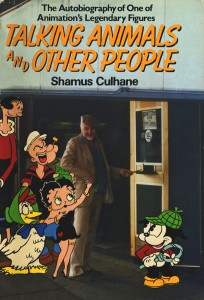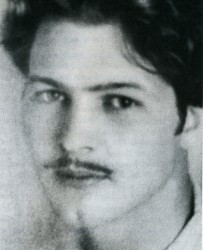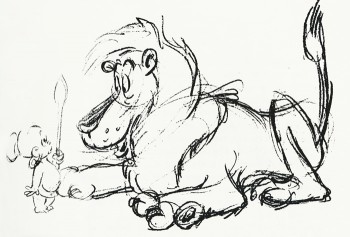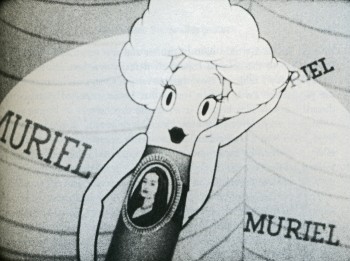Books 20 Sep 2011 07:35 am
Overdue Book Review – Talking Animals
 - Back in 1986, Shamus Culhane sent me a copy of his new autobiography, Talking Animals and Other People. I properly sent him a thank you note, and have to admit that I put the book aside and didn’t get to read it. All these years later, I have finally read it and thought I give some comments on the book.
- Back in 1986, Shamus Culhane sent me a copy of his new autobiography, Talking Animals and Other People. I properly sent him a thank you note, and have to admit that I put the book aside and didn’t get to read it. All these years later, I have finally read it and thought I give some comments on the book.
Shamus and I were never close. He always seemed, to me, so full of himself that I had a hard time getting past the image he tried to put across. It all climaxed with a serious argument we had when I was on the Executive Board of the animator’s u-nion, Local 841, in NY. Shamus was starting a studio in NY to produce the sequel to the show he had done in Italy, Noah’s Animals. This one was to be called King of the Beasts. He came to the Board to add an amendment to the contract. He felt that animators would work on a scene and quite often not heed the director’s instructions and incorrectly animate the scene. He wanted the right to ask for the scene to be reanimated at no charge. The Board, in asking questions about the proposal, seemed not too pleased with the idea. Somehow it came to an argument between me and Shamus, however civil,
 over this idea. I asked how many times was the animator to redo the scene for the Producer without getting paid; the notion seemed so Producer-sided that I couldn’t believe that Shamus was requesting this proviso. The Board voted it down.
over this idea. I asked how many times was the animator to redo the scene for the Producer without getting paid; the notion seemed so Producer-sided that I couldn’t believe that Shamus was requesting this proviso. The Board voted it down.
After that, Shamus wouldn’t talk to me again whenever we met in NY. He came to the Raggedy Ann studio several times that year but refused to say hello to me again. Oh, well. However, he did send me a copy of his book.
And I read it this past week. Finally.
I have to say it started Gangbusters for me. I just zipped on into the book and loved every second of it. Here was a guy who had lived through the early days of silent animation and continued working for some of the best. Bray, Fleischer, Iwerks, Van Buren and Disney  followed by animation for Jones and direction for Lantz before opening his own studio to make TV commercials and shows. After several years of success he went bankrupt, then he animated for Hubley and ran Paramount, finally producing a couple of odd one-off TV programs. The man had done just about everything. And it’s in the book.
followed by animation for Jones and direction for Lantz before opening his own studio to make TV commercials and shows. After several years of success he went bankrupt, then he animated for Hubley and ran Paramount, finally producing a couple of odd one-off TV programs. The man had done just about everything. And it’s in the book.
There’s a first-hand account of all these studios that, if nothing else, serves as strong corroboration about how those studios were run – in some detail. The reader rides along with Culhane, almost feeling as though you were there with him. His story is so well told and written that it almost reads like a rousing Mark Twain action yarn about early animation. It flows. Of course, it’s all from the POV of Culhane, so there may be some bias,
 but, factually, the first half of the book seems pretty accurate. I can’t vouch for the second half when Culhane talks about his own studio. Some of the work at that studio included the Ajax elves, Around the World in 80 Days credits, the dancing Muriel Cigar, as well as Hemo the Magnificent and other Bell Science series shows. It’s an impressive list of credits, if you know any of the films.
but, factually, the first half of the book seems pretty accurate. I can’t vouch for the second half when Culhane talks about his own studio. Some of the work at that studio included the Ajax elves, Around the World in 80 Days credits, the dancing Muriel Cigar, as well as Hemo the Magnificent and other Bell Science series shows. It’s an impressive list of credits, if you know any of the films.
The first half of the book, through the Warner Bros. section, is just great. If you know any part of this animation history, this book will fill gaps you may have. Once I got to the Lantz section then through to the end of the book, Shamus Culhane’s ego entered and seemed to keep growing. Perhaps it’s a well deserved ego, but it did present something of a problem for me . . . a hiccup every time I stumbled over it.
But the book is eminently readable, and I heartily recommend it to everyone interested in animation. It’s not only informative but fun.

on 20 Sep 2011 at 9:59 am 1.Marc said …
I couldn’t agree more with your review. I never met Shamus, but often heard about his ego, and it does, indeed, crop up more and more as the book goes along.
on 20 Sep 2011 at 10:08 am 2.Ray Kosarin said …
Great book! It is highly personal and, yes, even self-centered (I remember one reviewer, I think in the Christian Science Monitor, who said something like, ‘not all of the stories are self-serving’), but as long as the reader not mistake it for an objective history, this only adds to the sense that Shamus is right there with you, telling these great stories.
There’s one especially fascinating, and important, episode from the book that I wish everyone in animation would read: a story about Shamus at Disney, animating a long and excellent sequence, in ‘Hawaiian Holiday’, of Pluto fighting to get a crab off of his tail. Shamus is both humble and passionate as he described his sweat-and-blood struggle to get into the almost Zen of the scene while also solving the nuts-and-bolts mechanics of the drawing and timing. Any animator (and especially producer!), who imagines there’s nothing more to animation than pushing artwork around in Adobe Flash until it ‘moves’, must read this chapter!
on 20 Sep 2011 at 10:55 am 3.David Levy said …
Probably THE most important animation book in my library, just because it was the first book that made me feel what a life in animation is really like. You didn’t get that with any other animation history books or how-to books. And, if anything, the failings of his oversized ego just make him that much richer a character, that much more human.
on 20 Sep 2011 at 12:46 pm 4.Mark Mayerson said …
I can’t think of another autobiography or biography of an animation person that I enjoy as much as this book.
on 20 Sep 2011 at 1:54 pm 5.Dan Haskett said …
Mike, thanks for giving me a good laugh this morning! I agree with you completely about the book…and laughed out loud at your memoir. Shamus (along with his then business partner, George Bakes) was my first boss, and was a curmudgeonly, conniving rascal. Your story about him is all too believable, and all too funny. I’ve always enjoyed the book, although I’ve had to look the other way from some of the stuff in it. You know, I’ve wondered what the staff at Paramount thought when Shamus “handed the torch” to Ralph Bakshi. I think they had more in common than either of them realized. Thanks so much for posting!
on 20 Sep 2011 at 4:20 pm 6.Charles Brubaker said …
I’ve only seen snippets of the book, but it’s great from what I’ve read. I should buy it eventually.
Dan Haskett,
Well, few weeks back I talked to one of the animators who worked at Paramount under Culhane and Bakshi. He had some positive things to say about Culhane, but absolutely hated Bakshi (he worked with him at Terrytoons before going to Para.). So there’s that account.
on 20 Sep 2011 at 8:04 pm 7.Mark Sonntag said …
I agree Mike, the second half is not nearly as interesting as the first. I think the detailed descriptions of life at Disney Hyperion are awesome.
on 22 Sep 2011 at 1:20 pm 8.Eric Noble said …
I’ve read the first half of the book. I need to go revisit it.
on 25 Sep 2011 at 7:03 pm 9.toonrog99 said …
Finally……………….some validation to a not perfect human who is my animation hero……..
Thank you for saying the truth as Mr. S. Culhane did most of the time.
Yes he wrote as if you were with him on a trip of the sometimes fantasic and sometimes not so fantatic journey of a life lifed FULLY AND PASSOSSIONATLY………………
The question arises…..as to what took you so long to read his book, and don’t kid yourself you wished you had read it sooner…….heheheheheeheeeeeeeee….
TOONROG99
Spo- wa-
on 29 Jan 2013 at 9:33 am 10.Reg Hartt said …
Stumbled across this today while researching Shamus Culhane on the web for a piece on my site about his use of music in animation.
Shamus had a strong ego, yes. So does anyone who does anything worth doing.
He was the first however to correct himself when proven (rarely) wrong as his admission that he was a music snob prior to working on Walter Lantz’s SWING SYMPHONIES.
The late Judith Merril and Jane Jacobs were close personal friends. They shared much in common with Shamus. They were LOUD in argument, could defend themselves and did not suffer fools gladly.
In other words, they were a joy to know and an inspiration to be around.
When it comes to animators willfully animating a scene against the will of their director I am with Shamus. They should do it free of charge as many times as it takes to do it the way they were instructed to. They are, after all, pencils. The director is the hand.